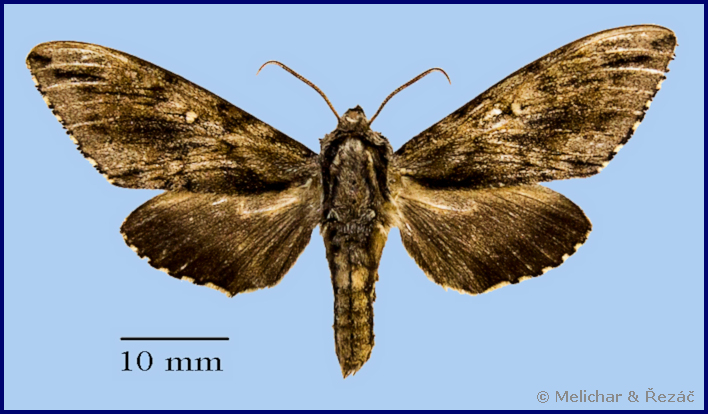
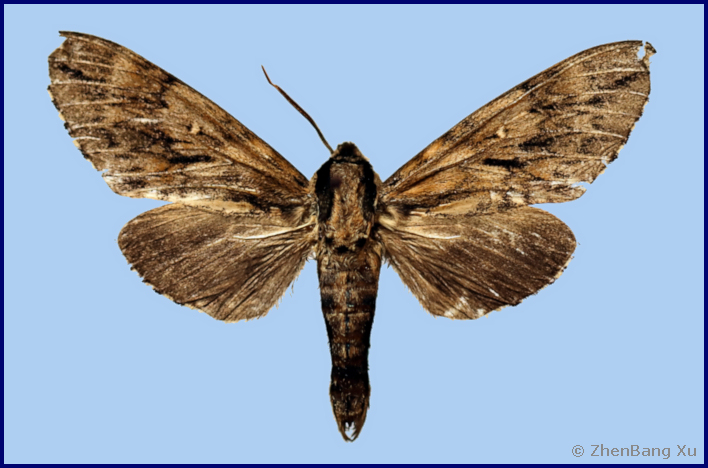
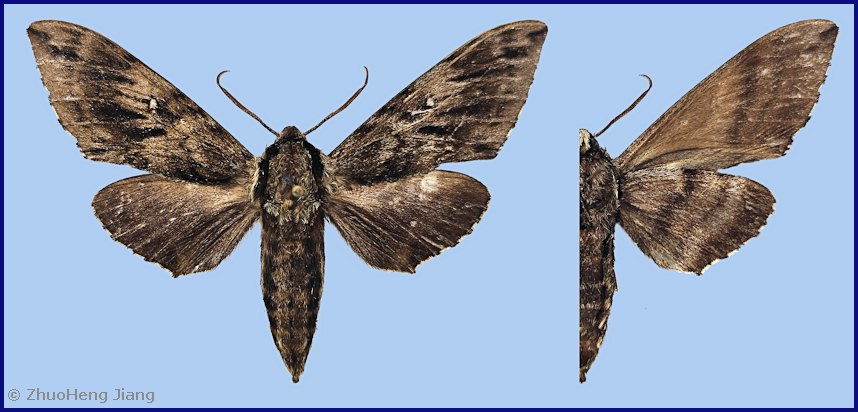
Kentrochrysalis havelki Melichar & Řezáč, 2014, European Entomologist 5(3): 66. Type locality: China, Shaanxi Province, Qinling Mountains, south of Baoji, 34°13.932'N, 106°58.080'E, 1600m, 31.v.-1.vi.2009, leg. Floriani & Saldaitis.
Note. Visually, apart from a darker colour, Kentrochrysalis havelki can be very difficult to separate from Kentrochrysalis heberti Haxaire & Melichar, 2010. Records of one may be of the other species.
Note. In comparison with Kentrochrysalis heberti and Kentrochrysalis streckeri, Kentrochrysalis havelki is smaller and darker, with the antemedial band on the forewing costa divided to form a dark triangular patch. The underside of the forewings also has a far more conspicuously coloured border. In comparison with the male genitalia of Kentrochrysalis heberti and Kentrochrysalis streckeri, the gnathos of Kentrochrysalis havelki has a broader base and only an indistinct apical concavity. The dorsal lobe of the harpe is more compact and the form and number of teeth is different. The phallus is terminated by a short, triangular spine rather than a long, recurved hook (Melichar & Řezáč, 2014).
Note. The results of genetic analysis using DNA barcoding performed by the Canadian Centre for DNA Barcoding, University of Guelph, show that there is a minimum distance of 2.72% between Kentrochrysalis havelki and the nearest group represented by Kentrochrysalis heberti. These results, together with the differences in habitus and male genitalial morphological confirm the species status of Kentrochrysalis havelki (Melichar & Řezáč, 2014).
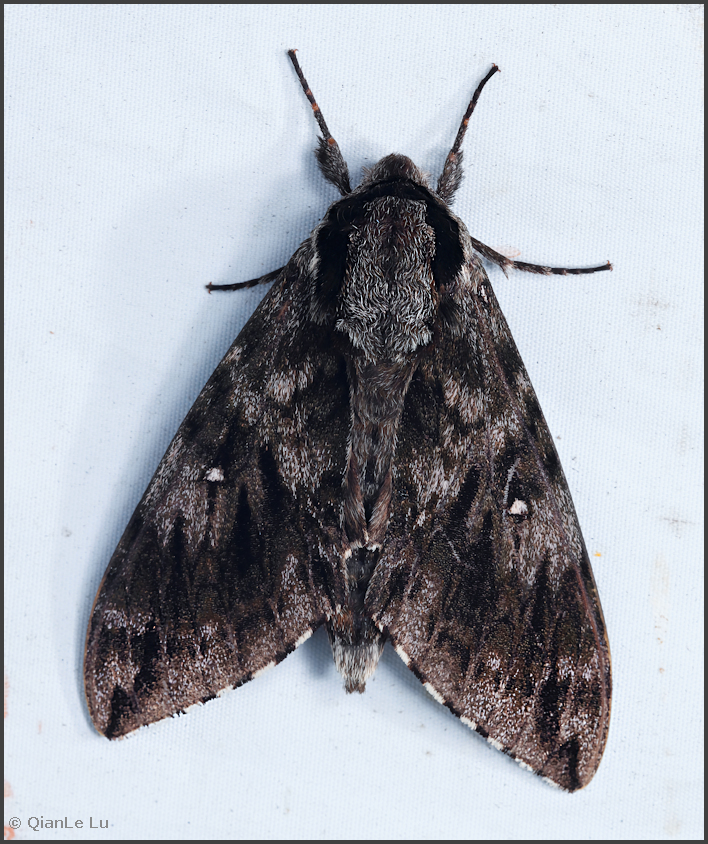
Wingspan 66 mm. Like a dark and more marked version of Kentrochrysalis heberti (ZhenBang Xu, pers. comm. 2024). Forewing upperside ground colour light brown, fringes chequered light brown and white. Antemedial and postmedial bands black brown, crenulated, concave toward base of and running across the entire width of the wing. Discal spot large, about 1 mm diameter, white. Antemedial band splits on costa and inner edge to form two dark coloured triangular patches. Irregular dark brown colour between submarginal and postmedial bands, with conspicuous black highlights on R5 and M veins. A dark brown line running diagonally in from apex to R4, where it bends and continues for approximately 5 mm between veins R4 and R5. Hindwing upperside dark brown, fading to a paler shade towards the base and costa; fringes chequered as forewings. Forewing underside ground colour clay brown, submarginal and postmedial bands darker and prominent. Hindwing underside whitish-brown, with a 5 mm wide border on the outer edge and a dark coloured diagonal strip located 10 mm from the base of the wing that fades towards the inner edge. Abdomen, thorax and head light brown; dark brown pattern on body segments as in other species of the genus (Melichar & Řezáč, 2014).
Male genitalia. Gnathos wide and square, with a straight distal margin with only a very slight concavity. Harpe with a long, upcurved apical process and a broadly triangular dorsal lobe bearing 5-6 large, irregular teeth. Phallus apically with a short, symmetrical triangular process (Melichar & Řezáč, 2014).
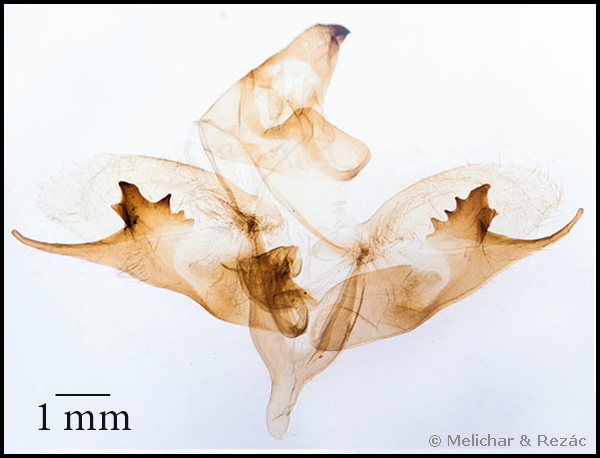
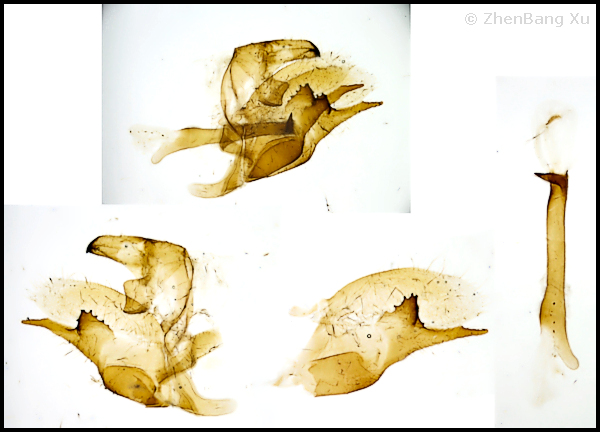
Deciduous broad-leaved forest with dense brush and an herbaceous understorey at, depending on latitude, 700-1600m altitude (Melichar & Řezáč, 2014; ZhenBang Xu, pers. comm. 2024).
China: 31.v-1.vi (Shaanxi); 17.vii (Baihua Shan, Beijing).
OVUM: Unknown.
LARVA: Unknown.
PUPA: Unknown.
Larval hostplants. Unknown.
Unknown.
China: Beijing (Baihua Shan, Mentougou District, 700m); Shaanxi (Qinling, Taibai Shan, south of Baoji, 1500-1600m; 30 km N Mianxian, 1500m); Hubei (Shennongjia National Nature Reserve).
Endemic to central China.
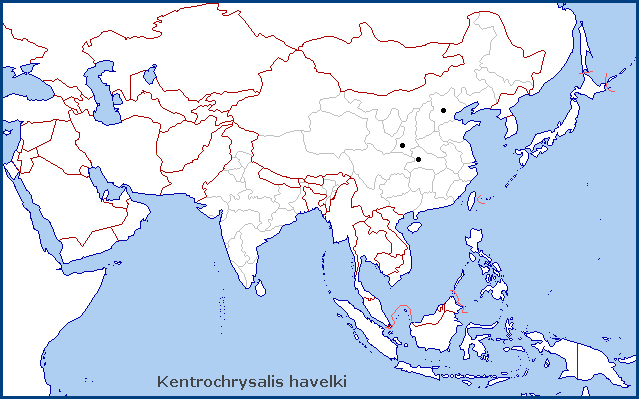
 Return to Sphingidae of the Eastern Palaearctic species list
Return to Sphingidae of the Eastern Palaearctic species list